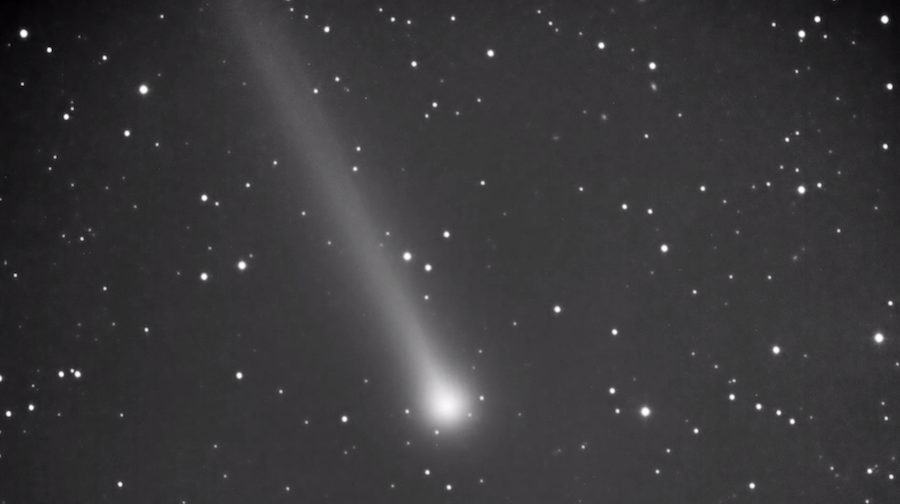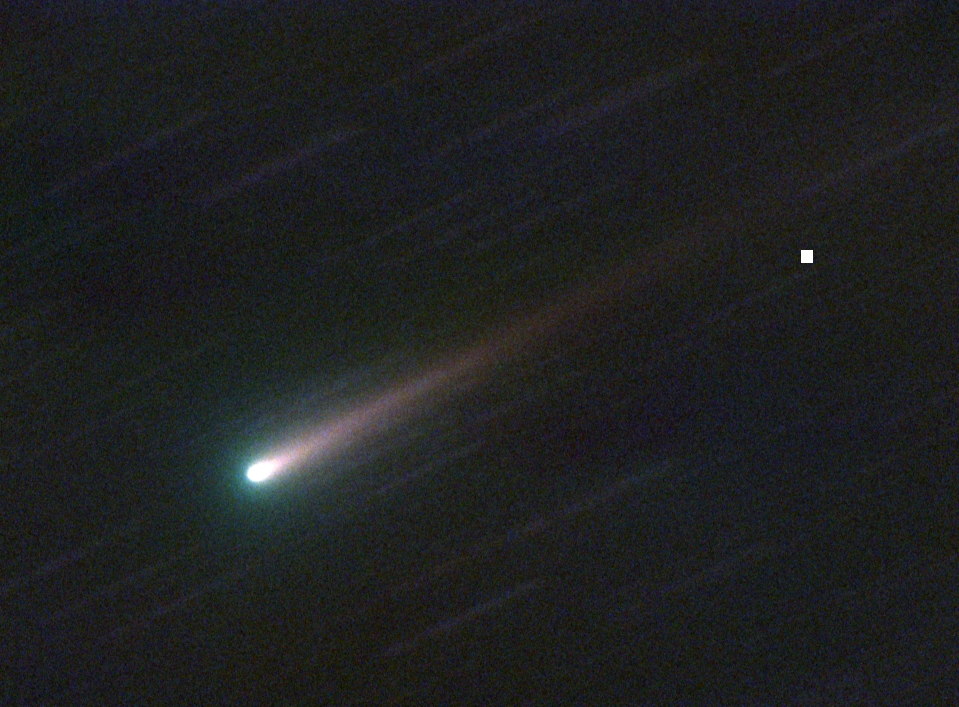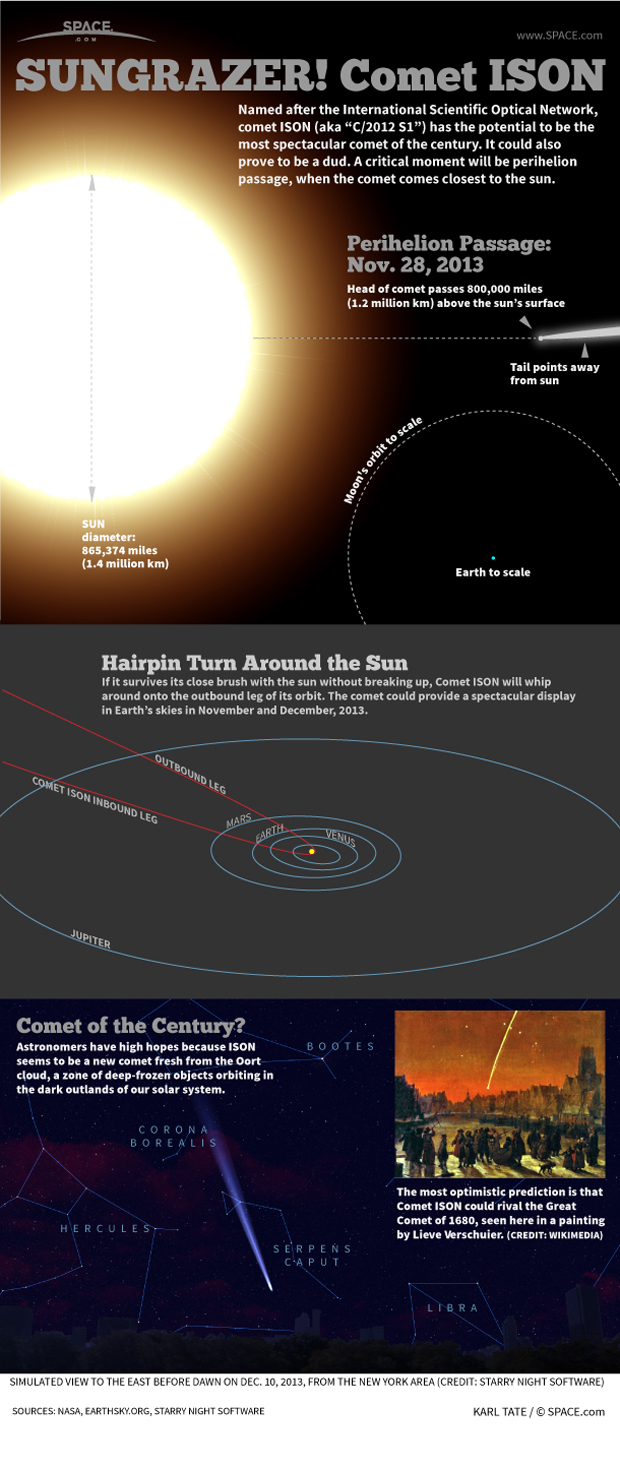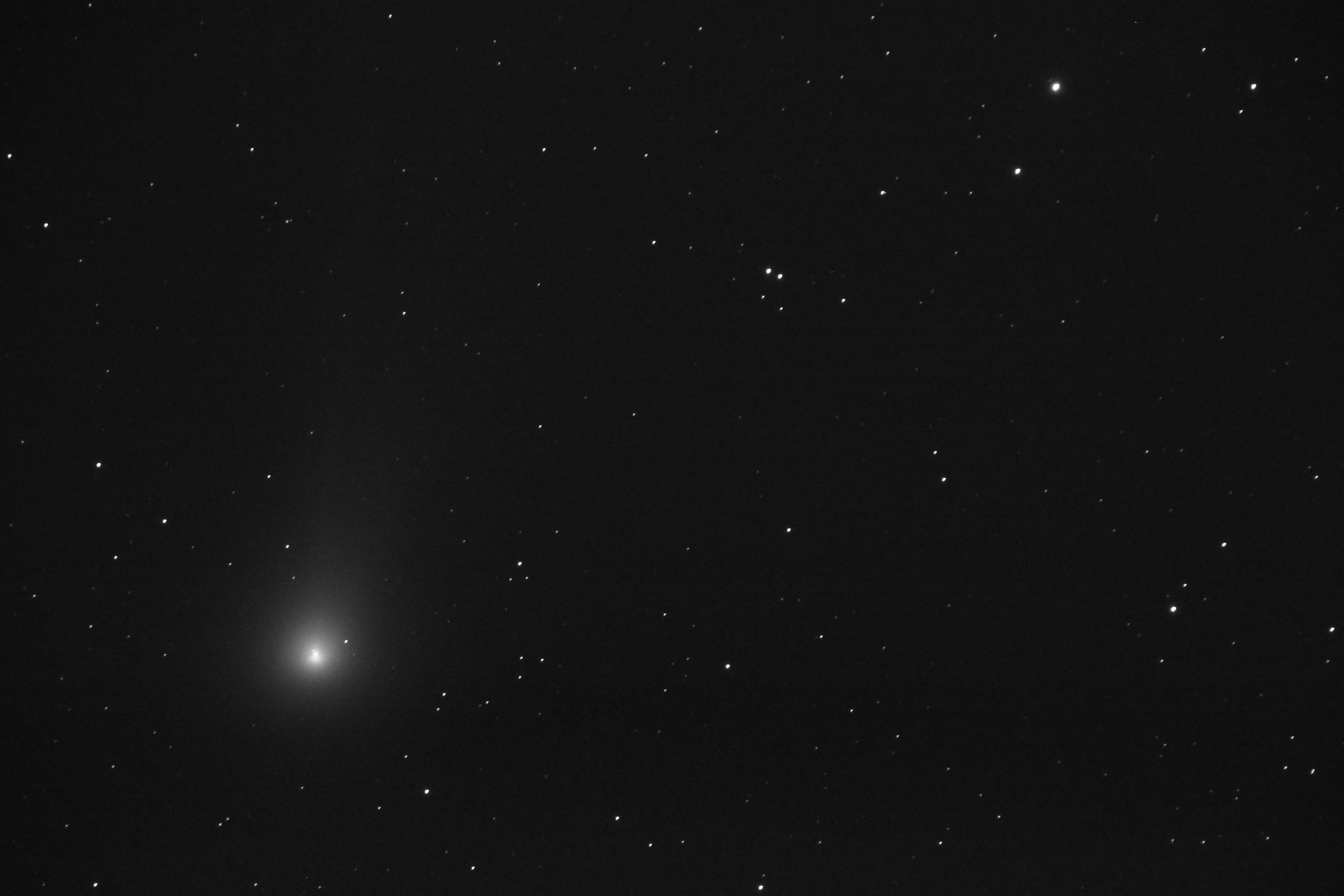Tails of Comet ISON and Comet Lovejoy Caught in Stunning Time-Lapse Video

Singapore-based sky photographer Justin Ng pieced together a stunning time-lapse video of two comets streaking across the pre-dawn sky.
The video of two incoming comets, captured on Nov. 11, shows the incoming Comet ISON with its long wispy tail as well as the newfound Comet Lovejoy, which is gradually brightening. The icy wanderers seem to move quickly against a backdrop of stars because Ng used a relatively small field of view and the long exposures to snap the images, the photographer said in his description of the videos.
"The video covers 50 minutes of imaging time for ISON and 90 minutes of imaging time for Lovejoy," Ng wrote. "From the video, you can see the reduced visibility of Comet ISON and Lovejoy as the sky was becoming brighter gradually." [Comet ISON's Stargazing Show: 8 Essential Facts]
You can see a high-definition vide of Ng's video via his Vimeo website here.


Comets ISON and Lovejoy are both headed for a dangerous dive toward the sun much to the delight of skywatchers and astronomers.
Some astronomers have said Comet ISON could be the "comet of the century" if it doesn't get ripped apart when it zips within 730,000 miles (1,175,000 km) of the solar surface on Nov. 28. It has brightened rapidly in the past few days, and in dark places, ISON is now visible to the naked eye in the southeastern pre-dawn sky, though it can be more clearly seen through binoculars and telescopes. Ng captured his images of ISON as it moved in front of the constellation Virgo.
Russian amateur astronomers Vitali Nevski and Artyom Novichonok discovered Comet ISON in September 2012. The comet is officially called C/2012 S1 (ISON), with ISON standing for International Scientific Optical Network.
Get the Space.com Newsletter
Breaking space news, the latest updates on rocket launches, skywatching events and more!

ISON's new companion Comet Lovejoy was only discovered in September 2013 by Terry Lovejoy, an Australian amateur astronomer. Lovejoy discovered another sungrazing comet that put on a dazzling show in December 2011. His new discovery is officially designated C/2013 R1 and it will make its closest approach to the sun on Dec. 22 at a distance of 75.4 million miles (121.4 million kilometers). Ng's photographed Comet Lovejoy as it passed the constellation Leo.
More of Justin Ng's photos can be found on his website: http://www.justinngphoto.com/
Editor's note: If you snap an amazing picture of Comet ISON or any other night sky view that you'd like to share for a possible story or image gallery, send photos, comments and your name and location to managing editor Tariq Malik at spacephotos@space.com.
You can follow the latest Comet ISON news, photos and video on SPACE.com.
Follow Megan Gannon on Twitter and Google+. Follow us @SPACEdotcom, Facebook or Google+. Originally published on SPACE.com.
Join our Space Forums to keep talking space on the latest missions, night sky and more! And if you have a news tip, correction or comment, let us know at: community@space.com.

Megan has been writing for Live Science and Space.com since 2012. Her interests range from archaeology to space exploration, and she has a bachelor's degree in English and art history from New York University. Megan spent two years as a reporter on the national desk at NewsCore. She has watched dinosaur auctions, witnessed rocket launches, licked ancient pottery sherds in Cyprus and flown in zero gravity on a Zero Gravity Corp. to follow students sparking weightless fires for science. Follow her on Twitter for her latest project.









